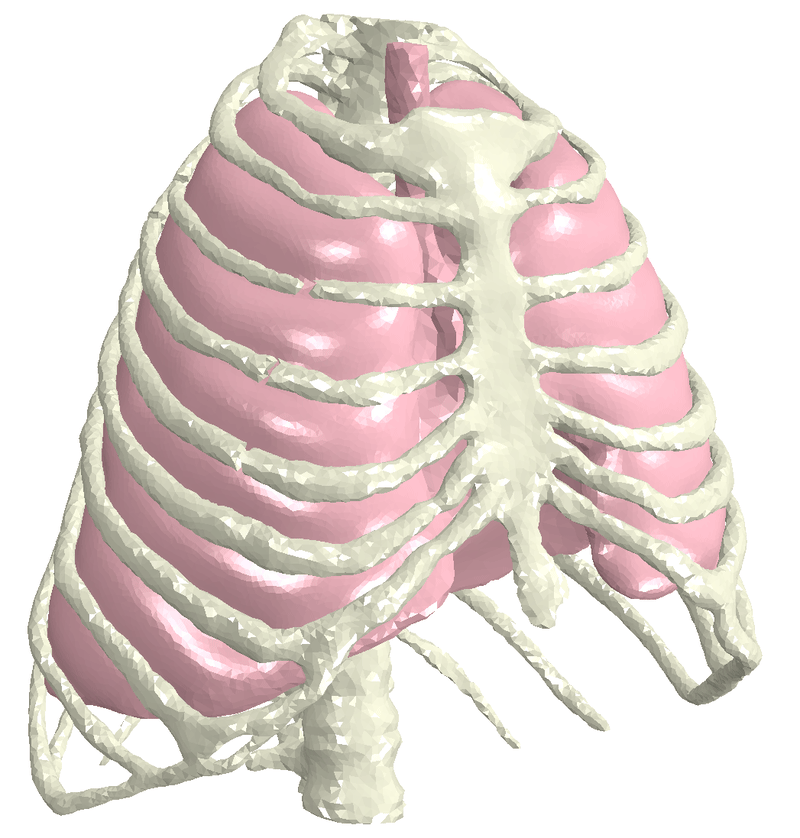Flail Chest
Severe thorax injuries result in up to 25 % of overall trauma mortality (Lin et al., 2016; Benhamed et al., 2022), with flail chest (FC) injuries, defined as three consecutively fractured ribs in at least two places (Clarke et al., 2019; Edwards et al., 2020), having the highest mortality risk (Lin et al., 2016; Benhamed et al., 2022). Though early operative stabilisation of FC improves patients’ outcomes (Chen Zhu et al., 2020), there is no consensus on an ideal indication for surgery, which is often solely based on the radiographic observation of an FC. We present an FE analysis of an FC, which fulfills physiologic active breathing patterns and realistically displays the paradoxical movement of an FC. Our simulation of different fracture configurations showed that the number of consecutive ribs involved and the length of the flail segment significantly impacted active breathing. This suggests that the indication for surgery should not be solely based on the observation of an FC, as the tidal volume loss and the needed compensatory breathing work correlate with the flail segment size. These findings need to be implemented into the definition of FC to more accurately indicate surgical stabilisation based on biomechanical observations.
See also: Zierke, J.N., Duda, G.N., Braun, K.F. et al. Biomechanics of flail chest injuries: tidal volume and respiratory work changes in multiple segmental rib fractures. Eur J Trauma Emerg Surg 51, 25 (2025). https://doi.org/10.1007/s00068-024-02754-x


